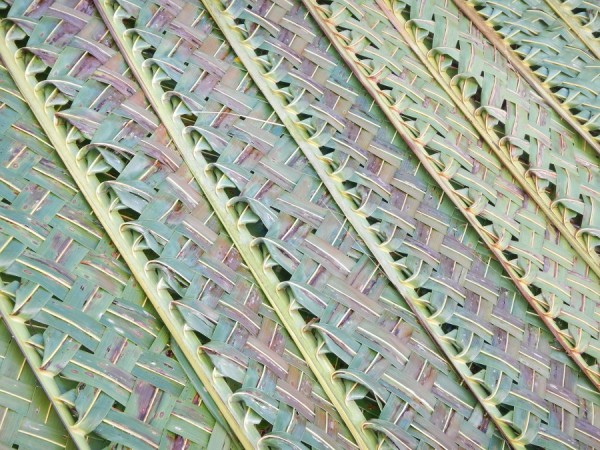 I promised in my last post that I would add some more about how the palm-leaf weaving is used. Apologies for the long gap since the last post – I’ve just been ridiculously busy (nothing exciting, just things like house chaos for new boiler installation etc.)
I promised in my last post that I would add some more about how the palm-leaf weaving is used. Apologies for the long gap since the last post – I’ve just been ridiculously busy (nothing exciting, just things like house chaos for new boiler installation etc.)
I’ll start with a coarser form of palm-weaving that is used to make houses. The palm-leaves below are drying in the sun. They have been plaited while still attached to their branch rather than cut off to make strands for finer weaving, because they’re going to be used for making houses. These have been plaited while they’re still supple, so they hold their shape when dry.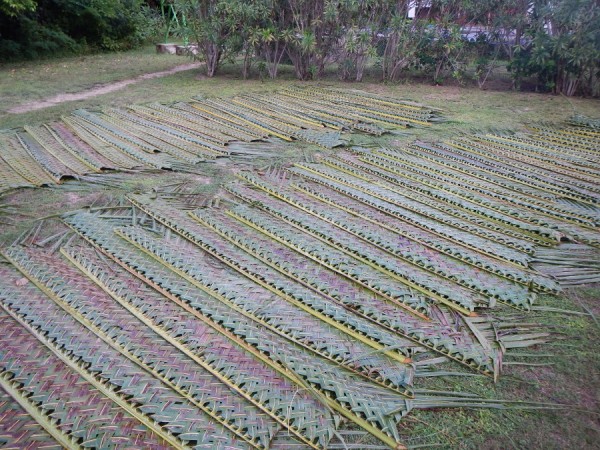
The woven Palm-leaf branches are used to make the walls and roofs of houses. They are wonderful to sleep in, because the breeze wafts in from the sea, keeping the air cool and the mosquitoes away. Here’s a little house, called a fale (pronounced fallay) that we stayed in on one of the Vava’u islands before the kayak trip, firstly looking from the outside. You can see some un-woven palm branches that have been laid over the top of the house, and you can see the woven palm fronds that make up the wall, tied to a wooden frame.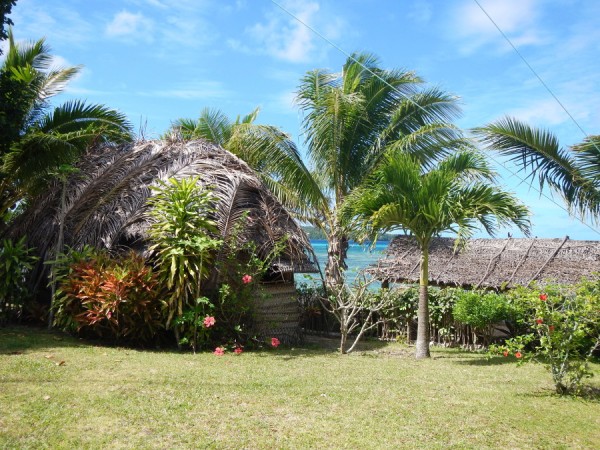
Looking up into the roof you can see the woven branches in the roof, laid over each other and secured, and then covered with a layer of looser palm branches.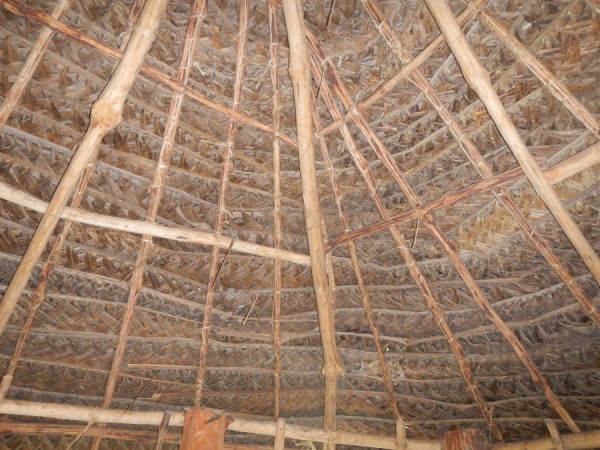
Later in the trip we went on a village home-stay with a family up in the mountains in Fiji (we stayed in the green and pink house below). My brother and his son had stayed there some years ago and were made really welcome, so we asked if we could stay with the same family.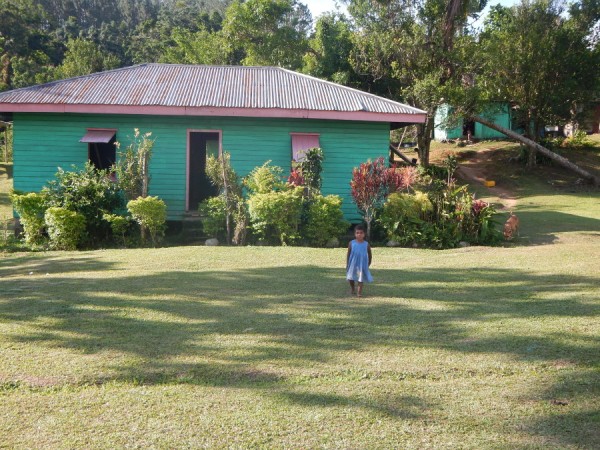
The palm-leaf weaving techniques in Fiji are similar to Tonga, although with local variations. The woven matting is used as floor-covering, and also doubles as something to sit on and also to sleep on. Here are four generations of our host family inside their house. 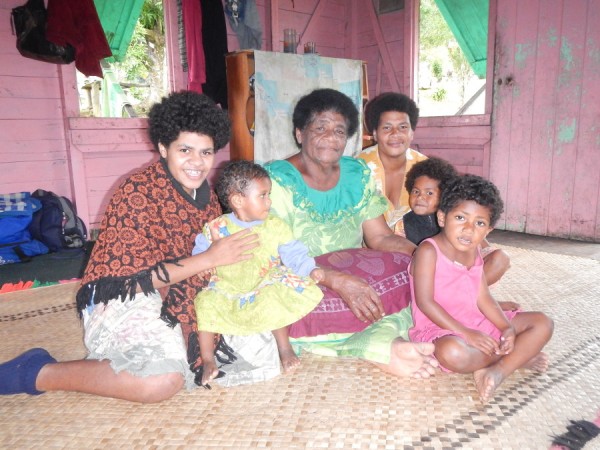
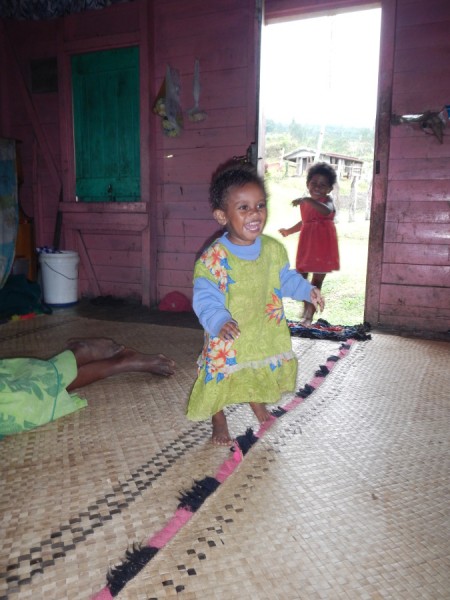 It’s a far cry from the ‘tourist cocoon’ way of travelling. It was beyond our normal comfort zone, and was a totally eye-opening and happy experience. Communicating with no shared language was interesting (and possible!) and the children seemed to find us a very strange novelty! One thing was a real eye-opener. Having slept in the family’s house, shared their meals, drunk kava at village ceremonies and been invited for tea in neighbouring houses, we began to feel we kind of belonged. We understood who was who, and how the village worked. After a few days a bunch of white western European tourists came to the village and wandered around. They looked so fearful and suspicious, clutching their bags close to them as if someone was about to mug them. One of the young men who spoke English commented very sadly to us that they looked at him and his village as if they hated them. This is incomprehensible to a Fijian way of thinking, as strangers are all future friends. Meeting Tongan and Fijian people has completely changed my attitude to talking to strangers wherever I am.
It’s a far cry from the ‘tourist cocoon’ way of travelling. It was beyond our normal comfort zone, and was a totally eye-opening and happy experience. Communicating with no shared language was interesting (and possible!) and the children seemed to find us a very strange novelty! One thing was a real eye-opener. Having slept in the family’s house, shared their meals, drunk kava at village ceremonies and been invited for tea in neighbouring houses, we began to feel we kind of belonged. We understood who was who, and how the village worked. After a few days a bunch of white western European tourists came to the village and wandered around. They looked so fearful and suspicious, clutching their bags close to them as if someone was about to mug them. One of the young men who spoke English commented very sadly to us that they looked at him and his village as if they hated them. This is incomprehensible to a Fijian way of thinking, as strangers are all future friends. Meeting Tongan and Fijian people has completely changed my attitude to talking to strangers wherever I am.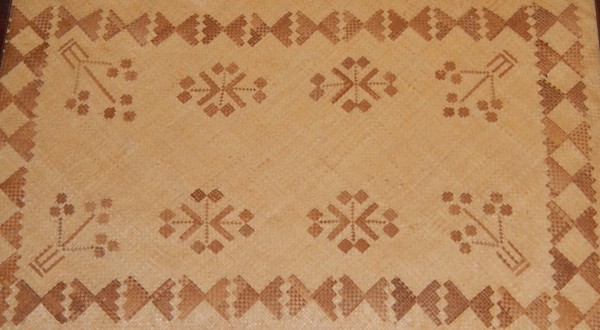
But back to the palm-leaf weaving. Here are some finer pieces of weaving, where the pattern has been added by weaving in a darker strand. The patterns are different between Tonga and Fiji, and a local expert can identify each pattern as coming from a specific village. Decorative weaving is used to make a long rectangular strip that is worn by men and boys on formal occasions such as Church or village meetings, wrapped around the waist and hips, tied off with a piece of cloth. They look quite stiff and uncomfortable to wear, which kind of adds to the the formal posture and the ‘gravitas’ of the occasion.
I’ll finish with a little tale. We were fully immersed in the village, enjoying learning about the traditional way of life. A life with no TV, computers, electricity or other mod cons, where everything is based on tradition. A young lad acted as our guide one day to go up the local mountain. He told us that he would become the village Chief later on in life. I asked if that meant that all the girls wanted to marry him. His answer was yes (with no hint of false modesty) but he added that he already knew who he was going to marry. I imagined that he would have been betrothed at a young age to a young girl selected as ‘suitable for a future Chief’s wife’, like generations before him. Then it became clear that his future wife was from a village on a completely separate island, and I couldn’t understand how they had met. It soon made sense… they met on Facebook! Coming from a Chief’s family, they had the only generator in the village so he was able to charge his mobile phone. The reason he was so keen to guide us up the mountain was that the top of the mountain is the only place he could get a mobile signal to get onto Facebook. Ha, that caught me out!










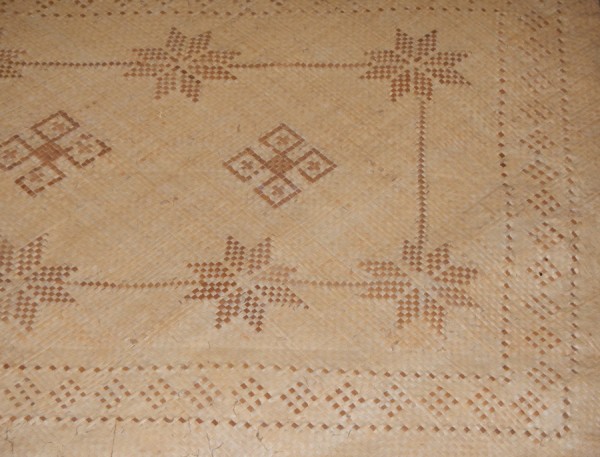
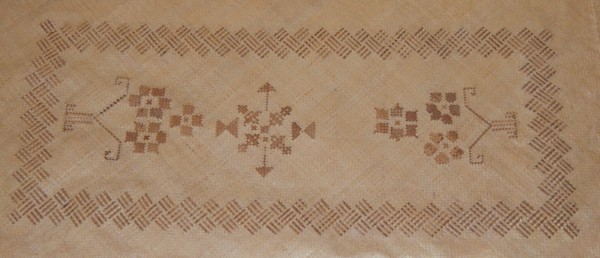
What a wonderful experience this was, Jane, giving you a real insight into life for the islanders. The floor mats woven with palm leaves are beautiful. Interesting – and yet not surprising when you think of it – that each village has its own designs. Made me think of fishermen’s jumpers in our part of the world.
I can’t quite believe we were actually there. I love it when there’s an opportunity to do something ‘crafty’ or ‘stitchy’ with people, as it helps to overcome the fact that you have no common language. It provides a reason to just sit quietly alongside someone while their normal life goes on around you.